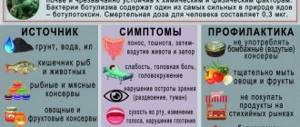Causes of vomiting foam
Vomiting is a concomitant symptom of diseases of the stomach or nervous system. Only a doctor can diagnose the exact cause.
A child's body is more susceptible to external stimuli than an adult. Vomit can be ordinary, which removes digested food, with blood, with bile, with foam. What determines the different composition of secretions:
- Vomiting foam is a sign of an infectious disease of the nervous system. Associated symptoms are acute headache, convulsions, no feeling of nausea, and abdominal cramps do not go away.
- A dangerous symptom of one-time vomiting is that a person experiences dizziness, loss of balance or consciousness, eye problems appear, and vision deteriorates. These signs are characteristic of cancer.
- Diabetes mellitus may be a cause. Treatment will help get rid of it. If you experience excessive nausea, it is important to drink more fluids to avoid dehydration.
- With inflammation of the pancreas and related diseases, there may be not only foamy vomiting, but also bloody discharge and white mucus. The person experiences general malaise, fever and blood pressure rise. An accurate diagnosis is necessary to identify the cause and treatment.
- Observed in chronic gastritis of the stomach. If the disease is neglected, serious complications will follow.
- The cause is large consumption of alcoholic beverages, the body becomes poisoned.
- It can be triggered by violations of diet rules during exacerbations of stomach diseases.
- Appears with intestinal ulcers.
- If a person experiences severe stress, negative emotions, spasms occur in the gallbladder, the functioning of the pancreas is disrupted, and the digestive system cannot cope with the load.
- Presence of helminthic infestation.
- With intestinal obstruction, foam, bile, and yellow discharge are observed, and the person feels a bitter taste.
Pay attention to the time of vomiting and the composition of the vomit. This will help you find out the reason. In the morning, nausea without fever occurs during pregnancy during toxicosis, and with infectious diseases of the head.
After eating, evening vomiting indicates problems with the stomach, gastritis, and intestinal ulcers. To determine the cause, you must undergo a doctor's examination.
Foam vomiting in children
In children, this is a manifestation of the body's protective reaction. It removes undigested food and harmful compounds. This is normal in the first months of life. The child's gastrointestinal tract is developing.
Nausea in older children can be caused by food poisoning, a reaction to medications, or frequent stressful situations. It may indicate problems with the digestive system, disturbances in the functioning of the stomach, the presence of pathogens, and intestinal dysbiosis.
Vomiting of white foam in children can occur in the presence of helminthic infestation. Despite the child's good appetite, he is rapidly losing weight. To confirm the diagnosis, it is necessary to submit stool for analysis. If the result is positive, treatment is prescribed for all family members.
A possible cause of nausea in children is insufficient nutrients. To eliminate the symptom, review your baby's menu.
Another reason is the deviation of the development of the digestive organs.
Vomiting always worries parents. Therefore, if it occurs without an obvious reason, it is necessary to find out the cause and try to eliminate it, because the negative effects on the body can be very unpleasant and sometimes dangerous. To avoid complications and allergic reactions, seek medical help promptly. Do not self-medicate your child! Only after an accurate diagnosis and doctor’s recommendations begin treatment.
Bloody vomiting is a cause for concern
Often this symptom indicates a serious disorder. It is observed with intestinal and stomach ulcers. The color of the vomit will help determine the cause. Bleeding in the stomach, pharynx, and blood vessels is diagnosed if the vomit is bright red. Brown vomit occurs due to bleeding in the duodenum, the lower part of the stomach.
In some cases, vomiting with foam and bile is observed. When the vomit is green or yellow and there is a bitter taste in the mouth, this is a symptom that a person has an intestinal obstruction.
You can find out the cause of vomiting by paying attention to the time when it appeared. In the morning, a symptom of alcoholic gastritis, during pregnancy, or with serious brain diseases is a concern. In the evening, vomiting occurs if a person has problems with gastric patency; this happens after eating.
Bloody vomiting almost always indicates serious problems. Most often this happens with peptic ulcers of the gastrointestinal tract. The approximate cause of bloody vomiting can be determined by the color of the vomit. If it has a bright red color, this indicates bleeding in the upper stomach, esophagus or pharyngeal vessels.
What to do if you are vomiting foam
If vomiting with foam occurs, you should consult a doctor; if it occurs frequently, call an ambulance immediately. While she's waiting:
- Monitor your general condition and drink fluids to avoid dehydration. It is especially dangerous in childhood.
- To avoid dehydration, take rehydration solutions.
- Stay in bed until the doctor arrives.
- Wash your face with cool water.
- Measure your body temperature.
- Ventilate the room so that foreign odors do not provoke a feeling of nausea.
How to help the body cope with an unpleasant symptom and alleviate the condition? There are tips:
- An ice cube will help ease the feeling of nausea and vomiting.
- Peppermint candies can help relieve nausea.
- To relieve cramps and stomach pain, drink no-shpa.
What is vomiting
The gag reflex is a protective reaction of the human body. In diseases of the digestive tract, the stomach does not allow food to pass through in order to relieve the intestines, and does not allow substances to be absorbed through the villi in the rectum. But vomiting with foam is not a typical manifestation of poisoning. This is a sign of serious problems in the digestive system and requires careful study.
Vomiting is a reflex contraction of the abdominal muscles, internal muscles, in which the contents of the stomach are expelled through the mouth. Foods or liquids are perceived by the body as potentially dangerous substances. The vomiting center, located in the medulla oblongata, becomes overexcited and gives the command to empty. In this case, a reaction may occur to certain smells or tastes of food.
Treatment methods for vomiting
Traditional medicine has remedies to combat nausea and vomiting. Medicinal herbs and mixtures for treatment:
- Dill water. Steam 1 teaspoon of dill seeds in a glass of water and strain the solution. You can buy ready-made dill water at the pharmacy. Prescribed to children from birth for colic. Helps cope with increased gas formation and reduces nausea.
- Mint and lemon balm leaves. Tea with mint has a tonic effect and relieves stomach pain. Infuse the decoction of lemon balm leaves for 3 hours. Take 50 ml 4 times a day if you feel nauseous.
- Lemon zest is good for vomiting flakes. Steam lemon zest with water, take 100 ml 3 times a day.
- Chamomile flowers. Steam chamomile and strain. Take 200 ml before meals. This is an excellent anti-inflammatory agent.
- Calendula officinalis is an antispasmodic agent. Used for stomach ulcers, gastritis, nausea.
- Tea with ginger root. Ginger has a beneficial effect on the stomach, improves metabolism, tones, relieves pain, and relieves inflammation.
At home, in addition to medicinal plants, you can use the following methods:
- Starch. A spoonful of starch is steamed in a glass, the solution relieves stomach cramps. The drug is used for poisoning.
- Baking soda. Dilute a teaspoon of baking soda into a glass of water.
- Potato juice. Relieves stomach cramps and copes with feelings of nausea.
Traditional methods will help you improve your well-being. Approach treatment with caution and consult your doctor before use.
Drug treatment for vomiting
The doctor uses tests to determine the cause. If medication is required, use only with your doctor's approval. Mild forms are tolerated without any treatment. Consideration should be given to adding fluid and minerals. For more severe forms of vomiting, the choice of drug is made based on the diagnosis. To get rid of nausea and vomiting, there are different types of drugs.
Antiemetic effects are exerted by substances that affect the nervous system in different ways. If the diagnosis is related to stomach diseases, then antispasmodics, astringents, and broad-spectrum antibiotics are effective.
Treatment
Further assistance to the patient depends on the diseases that provoked the complication. If a child or adult repeatedly vomits foam, you can use medications that reduce the gag reflex:
- Metoclopramide;
- Cerucal;
- Motilium;
- Aminazine.
In case of intestinal disorder, it is necessary to reduce intoxication in order to normalize intestinal function. Taking adsorbents in solution or tablets helps to cleanse toxins naturally. If vomiting saliva is accompanied by loose stools, you can use:
Enterosgel helps cleanse the microflora in case of poisoning. For disorders caused by stress, the help of a neurologist and psychologist is necessary. The doctor prescribes a course of medications with a sedative effect that gradually reduces irritability. Treatment lasts 3–4 weeks, during which sleep patterns normalize, appetite and calmness are restored.
Prevention
How to help your body prevent gagging:
- In case of exacerbation of gastrointestinal diseases, be sure to follow a diet.
- A balanced diet will help fill the body with nutrients and vitamins.
- Drink small amounts of sweetened water to help calm your stomach.
- Limit physical activity.
Take care of your health, seek medical help on time and you can avoid unpleasant consequences for the body.
Vomiting during pregnancy, causes, possible risks and consequences, treatment methods. Many people know that one of the signs of pregnancy is malaise and nausea. Women are susceptible to this in the first weeks after conception, then the condition stabilizes. But what are the causes of nausea throughout the entire period?
Traditional methods for foamy vomiting
At home, folk recipes help reduce nausea and pain. If vomiting saliva in an adult is caused by alcohol intoxication, you can take the following formulations:
- clean water with lemon juice;
- decoction of dill or fennel seeds;
- green tea with a spoon of honey;
- warm infusion of mint, chamomile and lemon balm.
In case of food poisoning, a decoction of eucalyptus or bay leaf helps calm the stomach. Drink 30–50 grams of liquid. at one time, trying not to eat during the first 24 hours. In case of exacerbation of gastritis, long-term adherence to a special diet is recommended. Traditional methods during pregnancy should be used with great caution.
Vomiting and pregnancy: norm and deviations
Nausea after conception and until the end of the first trimester is normal.
At this time, changes occur in the body, the amount of hormones increases, and the embryo is fixed. Because of these factors, the woman feels unwell, lack of appetite and toxicosis. Habitual dishes become tasteless and disgusting, this is caused by an increase in the sensitivity of taste buds. Almost 90% of women experience morning vomiting.
If attacks are repeated up to three or five times a day, then this is normal. If you have frequent urges, you need to consult a doctor to identify the cause and eliminate it, as this is dangerous, dehydration of the body is possible, which leads to vitamin deficiency, nutritional deficiency in the fetus and miscarriage.
There are three degrees of toxicosis:
- Mild - vomiting up to five times a day, the condition of the woman in labor is satisfactory.
- Average – nausea up to ten times a day. A woman’s weight loss is up to three kilograms, hypotension and an increase in heart rate. A doctor's supervision is required.
- Severe – attacks are constant, more than twenty times a day. Severe weight loss, deterioration of general condition. Requires hospital treatment.
Treatment at home and at the veterinarian
If you notice unusual vomiting in your pet, you should try to help even before you get to the veterinary clinic. It is important to create a comfortable environment at home. Never scold your pet for exhibiting uncontrollable physiological reactions! Carefully monitor the cat, note in a notebook all unusual phenomena and accompanying symptoms - the veterinarian will definitely ask about them.
The bowl should contain clean filtered water at room temperature, but it is better to remove food for a while - especially if you suspect some kind of disease. Protect your pet from the harassment of children and other animals. Prepare a comfortable carrier and a warm blanket for transportation to the clinic (if it’s cold outside).
First aid at home
The very first action is to limit your pet's food intake, unless it is a case of hunger nausea. You should not give food for a day - this will reduce the load on the body. Be sure to carefully examine the vomit to accurately describe everything to the doctor. Ideally, take a photo of them. Observe whether there are accompanying alarming factors: whether the cat behaves restlessly, whether saliva flows, whether complaining sounds are heard, etc.
If your cat is vomiting from hunger, offer him a very small amount of boiled diet food - chicken or beef broth, a little wet food. Start with one tablespoon of food, then gradually, over two days, increase the portion to the usual one. At this time, the interval between feedings should be minimal - up to 3 hours.
During a fasting diet, water should be freely available. You should only use bottled or filtered liquid - tap water will only cause more harm. If the condition stabilizes, then you can give a little boiled rice.
If nausea continues, administer first aid to prevent dehydration. Most likely, the veterinarian will recommend the following over the phone:
- Give the cat activated carbon in a ratio of 1:10, that is, a tablet per ten kilos of weight. Observe all proportions strictly. Dilute the tablet in water and inject it into the mouth from a large syringe, after removing the needle. This will help if nausea occurs due to poisoning.
- If the attacks are short-lived, then you can give the furry patient Regidron solution.
- Dehydration can be prevented with the help of medications Enterosgel and Atoxil - but the dosage should be checked with a veterinarian by phone.
- If the cat is very weak and does not want to take liquid, then you need to inject Ringer's solution.
- If you suspect that the animal has eaten a small object, then you need to provoke a gag reflex. You can prepare a saline solution: to do this, mix one tablespoon of salt in 1 glass of warm water. Give your pet a drink until the urge to feel sick appears.
If the animal’s health does not stabilize within a couple of days, then you should immediately take it to a veterinary clinic.
Going to the veterinary clinic
Treatment for a cat vomiting white foam begins with an examination at a veterinary hospital. Tell the doctor all the information about your pet and its condition, when you began to notice such phenomena, and whether there are any chronic diseases. To make a correct diagnosis, you will need a thorough examination of the animal, laboratory tests, ultrasound of the abdominal cavity and kidneys. Based on the results, the veterinarian will establish a treatment regimen: it usually includes drug therapy and the parallel elimination and prevention of dehydration.
It is impossible to say in advance what medications the veterinarian will prescribe - it all depends on the primary disease. Infectious diseases will require a course of antiviral and antibiotics along with immunostimulating therapy. In case of poisoning, it is necessary to administer an antidote and detoxify the body. If there are problems in the gastrointestinal tract, the problematic organ is identified and treated.
Don't forget about the special diet. Food should be semi-liquid. It is best to feed small and frequent meals. If you give meat, it must first be boiled and chopped. After everything has stabilized, you can gradually switch to normal nutrition.
Causes in the early stages
Early in pregnancy during the first trimester, nausea occurs due to a number of physiological reasons:
- Changes in how the body works, double the load.
- Hormonal imbalance. The level of human chorionic gonadotropin increases.
- Receptor sensitivity increases.
To these factors you can add the emotional state of the expectant mother. At this time, it is unstable, there is a reassessment of the worldview and awareness of a new role in life, waiting for the appearance of a new person in the family. The nervous system directly affects the functioning of digestion, so malaise, lack of appetite and toxicosis can be triggered due to personal experiences.
During this period, if there is severe vomiting, it is recommended to take measures to eliminate the intensity. If attacks occur more than three times a day, you should consult a doctor.
Treatment usually includes:
- Monitoring the dynamics of weight, acetone in urine and blood.
- Parenteral administration of drugs.
- Normalization of water balance and electrolyte levels.
- Taking special medications with antiemetic effects (for example, metoclopramide),
- In case of severe dehydration, infusion therapy is performed.
It is important to understand that not a single article on the Internet, even the most informative, can be a substitute for professional advice from a medical specialist. Self-prescribing medications (including homeopathic ones) and procedures is strictly prohibited!
If the pathology is observed throughout pregnancy
In rare cases, vomiting occurs throughout pregnancy. This may be caused due to the following reasons:
- gastrointestinal problems;
- frequent stress;
- nervousness;
- poisoning;
- intestinal infection.
Regular vomiting signals some kind of disorder in the body. It is imperative to identify the source of the problem and eliminate it. Late toxicosis is especially dangerous; it can provoke premature birth, cause hypoxia and developmental delays in the fetus, anemia and dehydration of the woman.
In the third trimester, vomiting can be caused by strong pressure on the internal organs from the uterus and incorrect position of the fetus. Symptoms of nausea must be controlled to avoid complications.
Possible complications of hyperemesis (from Latin - hyperemesis gravidarum) for the expectant mother include:
- Severe reduction in body weight (from 5 to 20%).
- Dehydration and electrolyte imbalance.
- Mallory-Weiss syndrome.
- Hypokalemia.
- Vitamin deficiency.
- Anemia.
- Hyponatremia.
- Complications after childbirth.
Possible complications for the fetus include prematurity and intrauterine growth retardation.
Vomiting itself is not capable of causing harm to the fetus, but the risk of complications is caused not by vomiting, but by its consequences. Namely, severe weight loss, malnutrition, electrolyte disharmony, etc., which, in turn, can lead to miscarriage, early birth, and the appearance of birth defects in the baby.
Pathological causes
Constant nausea has pathological causes. The nature of the urge and consistency may indicate certain diseases.
Severe vomiting of blood in recent weeks
Vomiting blood in the last trimester can be caused by several factors:
- Binge eating. Excessive consumption of fried, smoked and fatty foods has a negative effect. Along with nausea there is a general malaise and pain in the stomach.
- Pressure of the uterus on the internal organs.
- Gestosis is a late toxicosis, a dangerous phenomenon at this stage, which requires mandatory treatment.
- Gastrointestinal diseases and poisoning.
With bile or acid in the second trimester after eating
Vomiting with bile during pregnancy in the second trimester is not normal. More often this occurs due to inflammation of the gallbladder. The second common problem is cholecystitis, in which nausea appears after eating and is accompanied by pain in the right side of the abdomen. The problem cannot be ignored and must be eliminated.
With acid and foam for no reason
A dangerous sign is vomiting with foam.
This may indicate an infectious lesion of the nervous system. Acute headache, cramps and stomach discomfort are observed. Foam in the vomit also appears with the following pathologies:
- Intestinal obstruction.
- Chronic gastritis.
- Helminthic infestations.
- Disturbances in the gastrointestinal tract due to severe stress.
- Alcohol poisoning.
- Intestinal ulcers.
These are serious illnesses that require immediate treatment. Therefore, at the first symptoms you need to visit a doctor.
Vomiting with foam in children
The baby’s immunity often fails and reacts sharply to infection with any infection. Therefore, the gag reflex often complicates the course of a common cold, acute respiratory viral infection, or intestinal flu. Foam vomiting in a child occurs when there is a deficiency of digestive enzymes, which is accompanied by acute inflammation of the pancreas. Signs of the disorder are referred to as acetonemic syndrome:
- nausea;
- refusal of food;
- specific odor from the mouth;
- The child vomits white foam.
The reason is a violation of the child’s nutrition, intestinal dysbiosis and other developmental features. In children, the problem often occurs due to an allergic reaction to certain foods, milk or gluten, or drug components. There are often cases of emotional stress in which vomiting occurs due to a certain irritant: fear of punishment, a test, an exam, fear of a teacher or parent.
How to stop vomiting if toxicosis
In case of severe toxicosis, doctors advise to stop the symptoms in order to avoid dehydration. To do this, use antiemetic drugs and resort to traditional medicine.
Antiemetic drugs
At the beginning of pregnancy, most medications are prohibited because the active substances in the composition penetrate into the bloodstream of the fetus and can cause harm. But there are drugs that are safe during the gestational period.
- Chophytol - has a plant base from artichoke leaves. Helps disperse bile, which has a positive effect on the stomach. You need to take it before meals, in a course of two or three weeks.
- Cerucal is approved for use from the second trimester; if there is a high threat to the mother, it can be prescribed in an earlier period.
- Polysorb – absorbs harmful substances in the body. Consume one hour before meals. The duration of the appointment is determined by the doctor.
- Essentiale Forte N – cleanses the liver, relieves nausea and has a calming effect.
Folk remedies
Methods of folk therapy for toxicosis are a decoction of herbs.
While waiting for the baby, you need to be careful with the composition, because some types of herbs are dangerous for a pregnant woman. For nausea, use a decoction of mint, yarrow and marigold. To prepare, use two tablespoons of each ingredient and pour boiling water, leave for half an hour, and use the strained broth.
Drinking cranberry juice is allowed; the drink stabilizes the condition of a woman in labor.
One of the permitted and recommended herbs during pregnancy is Ivan tea. Drinking two cups a day is enough. The plant strengthens the immune system and calms. In addition to decoctions, aromatherapy is used: essential oils of lemon and lime improve mood and also have a positive effect on the nervous system.
What causes people to vomit foam?
Diseases of the gastrointestinal tract cause various characteristic symptoms. If a person is vomiting with foam, then it is necessary to undergo a thorough examination and identify the exact cause of the disease. Based on the diagnostic results, the doctor will be able to prescribe adequate therapy to restore the function of the digestive system.
The main causes of vomiting with foam
Among the causes of vomiting foam in an adult are the following aspects:
- Pathologies of the central nervous system;
- Various diseases localized in the respiratory system;
- Diseases of the digestive tract;
- Meningitis. In this case, the hallmarks of the disease will be characteristic symptoms, such as confusion, muscle cramps, decreased clarity of the visual organ;
- Brain tumor or infection localized in an organ;
- Chronic form of gastritis. With this disease, along with foamy masses, the presence of bile is observed;
- Severe nervous strain can cause foamy vomiting;
- Stressful situations;
- Poor nutrition, bad food;
- Intestinal obstruction. In this case, a person experiences vomiting of green foam, as well as a bitter taste in the mouth;
- Internal bleeding. Not only a foamy mass is observed, but also blood. If a scarlet color is present, then a stomach ulcer has opened; dark clots indicate injury to the ulcer in the duodenum;
- Pancreatitis;
- Hepatitis;
- Heart attack.
Alcohol poisoning often causes foamy vomiting. Often happens after drinking drinks of questionable quality. It is very dangerous if the foam is white and vomiting occurs once, it is necessary to carry out diagnostics at an oncology center.
This phenomenon indicates a malignant tumor. Often a person additionally feels faint and dizzy. Lung diseases also manifest themselves as bloody and foamy masses.
It is urgent to do an x-ray to exclude the development of pneumonia.
Foamy vomiting in a child
If a child vomits foam, these may be the following reasons:
- dysbacteriosis;
- disorders of the central nervous system;
- neurosis;
- helminthic infestations;
- diseases of the gastrointestinal tract;
- taking new medications;
- chronic diseases of internal organs.
In childhood, foamy discharge from the esophagus is more common. If the disease is observed in an infant, this indicates insufficient feeding of the baby.
It is not difficult to determine such a reaction, since in infants the lack of nutrition, expressed in foamy vomiting, is present only in the morning.
If the child is of primary or school age, then the illness can be triggered by severe emotional overload in kindergarten or school. It is necessary to examine the child by a neurologist and psychotherapist.
Pathology treatment methods
After the first attack, the patient requires bed rest and proper dietary nutrition. After the stomach has emptied and the foamy contents have come out, it is not allowed to eat for 6 hours.
It is necessary to wait time to independently restore the functioning of the organ. Next, you are allowed to take chicken broth. After vomiting, it is necessary to maintain water balance in the body; this requires drinking large amounts of clean, still water.
Avoid taking the following foods in the first days after an attack:
- milk, kefir, fermented baked milk;
- any drinks containing caffeine;
- spicy and fried foods;
- alcoholic products;
- citrus fruit.
You should not take medications based on ibuprofen and aspirin as pain relievers. If it is necessary to treat and take antispasmodic medications, it is recommended to call a doctor at home to prescribe effective therapy for the treatment of the underlying gastrointestinal pathology.
The diet should include rice porridge, vegetables, bananas, bread and lean meat and fish. It is recommended to eat often, but in small portions. Among the effective medications are Motilium, Cerucal, Metoclopramide. Aminazim is used to eliminate stomach pain.
If diarrhea is present, then Smecta, Polysorb, activated carbon, Enterofuril, Enterodes are recommended. Among folk recipes, dill water is used. For two glasses of boiling water, 20 g of dry dill is required. The composition is brewed for 5 minutes, then filtered. Take two tablespoons during vomiting.
A positive effect is observed from herbal infusions, as well as water with lemon juice.
Proper treatment will quickly restore the functionality of the gastrointestinal tract and return the patient to a normal lifestyle.
Source: https://vzheludke.com/rvota-penoj-u-cheloveka.html
When is hospitalization indicated?
In acute toxicosis, when the urge is repeated more than 10-15 times a day, the woman’s body becomes dehydrated and the fetus lacks oxygen, which contributes to the development of a high risk of miscarriage.
In such situations, hospitalization and treatment in a hospital are necessary. It is necessary to undergo a course of therapy in a hospital for infectious infections and inflammation of the pancreas, chronic diseases of the digestive system. The need to go to the hospital is assessed by the doctor after a detailed examination.
Useful video
Let me start with the fact that the author of this article, at this very moment of writing it, is thinking about whether the delicious lunch will stay inside, or whether he will have, as is now common, to donate what he has eaten to his very close “white friend” - the toilet. Be sick. Nauseous in the morning, nauseous during the day, nauseous in the evening and at night. I feel sick from hunger, from overeating, from fatigue... from everything. This means that the article on early toxicosis will be prepared with great passion, diligence and hope.
Dangerous moments
Despite the fact that nausea is a common occurrence during pregnancy, in some situations you need to urgently consult a doctor:
- If signs of toxicosis suddenly cease in the first trimester, this may be due to spontaneous miscarriage, ectopic pregnancy, or fetal death.
- When the nature of vomiting changes (appearance of foam, bile, blood).
- Nausea is accompanied by abdominal pain and fever.
- Urges 10-15 times a day.
Toxicosis is an integral part of pregnancy. But sometimes excessive nausea and uncontrollable vomiting are a signal from the body that there is a disease that requires immediate medical attention. It is necessary to be attentive to changes in well-being during the gestational period.
When is vomiting in a pregnant woman a sign of illness?
However, vomiting should not always be attributed to the state of pregnancy: “This is toxicosis, it will go away on its own!” Let's look at examples when you need to distract yourself from the topic of toxicosis and correctly assess the situation. When is vomiting a reason to urgently consult a doctor?
- Infectious vomiting. Such vomiting is usually accompanied by fever, diarrhea, abdominal pain, and general weakness. Sometimes a woman remembers that the day before she “ate something wrong” or from questioning it turns out that other family members have similar symptoms. Vomiting and diarrhea during pregnancy is a reason to urgently consult a therapist or infectious disease specialist to diagnose the type of intestinal infection and appropriate treatment. Read more about poisoning during pregnancy.
- Vomiting due to high blood pressure or late gestosis. This type of vomiting occurs at the peak of increased blood pressure. This condition is very dangerous for both the expectant mother and the child, and requires urgent measures.
- Vomiting after injury. Based on this criterion, neurosurgeons and traumatologists assess the severity of traumatic brain injury. If a woman hits her head, falls, or has an accident, vomiting is an unfavorable sign.
- Vomiting bile during pregnancy is a sign of gastrointestinal dysfunction that is in no way related to pregnancy. Vomiting of green bile with a bitter taste occurs against the background of diseases of the liver, gallbladder and duodenum. This condition can also occur with prolonged uncontrollable vomiting, for example, with severe toxicosis.
- Vomiting blood during pregnancy is also an extremely dangerous condition. Vomit may contain fresh blood, which is a sign of bleeding from the esophagus or oropharynx. Also, vomit may resemble brown or brown coffee grounds - this is the most obvious symptom of a bleeding stomach ulcer. All these conditions require immediate hospitalization in the surgical department.
First aid for pregnant women with vomiting
First aid for a pregnant woman should be provided solely based on the causes of vomiting. It is better if this is done by a medical professional, having first correctly assessed the situation. In case of a normal attack of vomiting due to toxicosis, it is necessary to sit or lay down the pregnant woman to prevent her from losing consciousness, and offer strong sweet tea or plain clean water. If the blood pressure is high, it is necessary to give the woman certain medications and urgently send her to the hospital. When vomiting after a head injury, the patient should be treated by neurosurgeons. The list can be continued based on the previous paragraph of our article.
General recommendations for vomiting in a pregnant woman due to toxicosis:
- Frequent small meals. Food must be taken warm, but not hot, preferably in a lying or semi-lying position. Meals should be taken every two to three hours in small portions. For the first meal, it is important to choose foods that help relieve nausea and do not cause vomiting. There are no uniform recommendations on this matter. Some people benefit from viscous porridge, others from juicy fruits, others from black bread or sweet tea with crackers.
- Compensation for fluid and potassium losses. It is important to replenish the loss of water and important ions by any means. You need to drink as much as possible. In addition, you need to include potassium-rich foods in your diet. These include bananas, persimmons, figs, dried apricots, raisins, and potatoes. The ideal drink to replenish fluid loss is dried fruit compote.
Find out more about how to cope with morning sickness.
Is it dangerous to induce vomiting during pregnancy?
Sometimes women ask whether it is possible to induce vomiting in case of prolonged and non-productive nausea. Unfortunately, as a rule, such provoked vomiting does not bring relief. Moreover, inducing vomiting artificially is dangerous - it can lead to bleeding from the stomach or esophagus, increased blood pressure and fainting.
Alexandra Pechkovskaya, obstetrician-gynecologist, especially for Mirmam.pro










